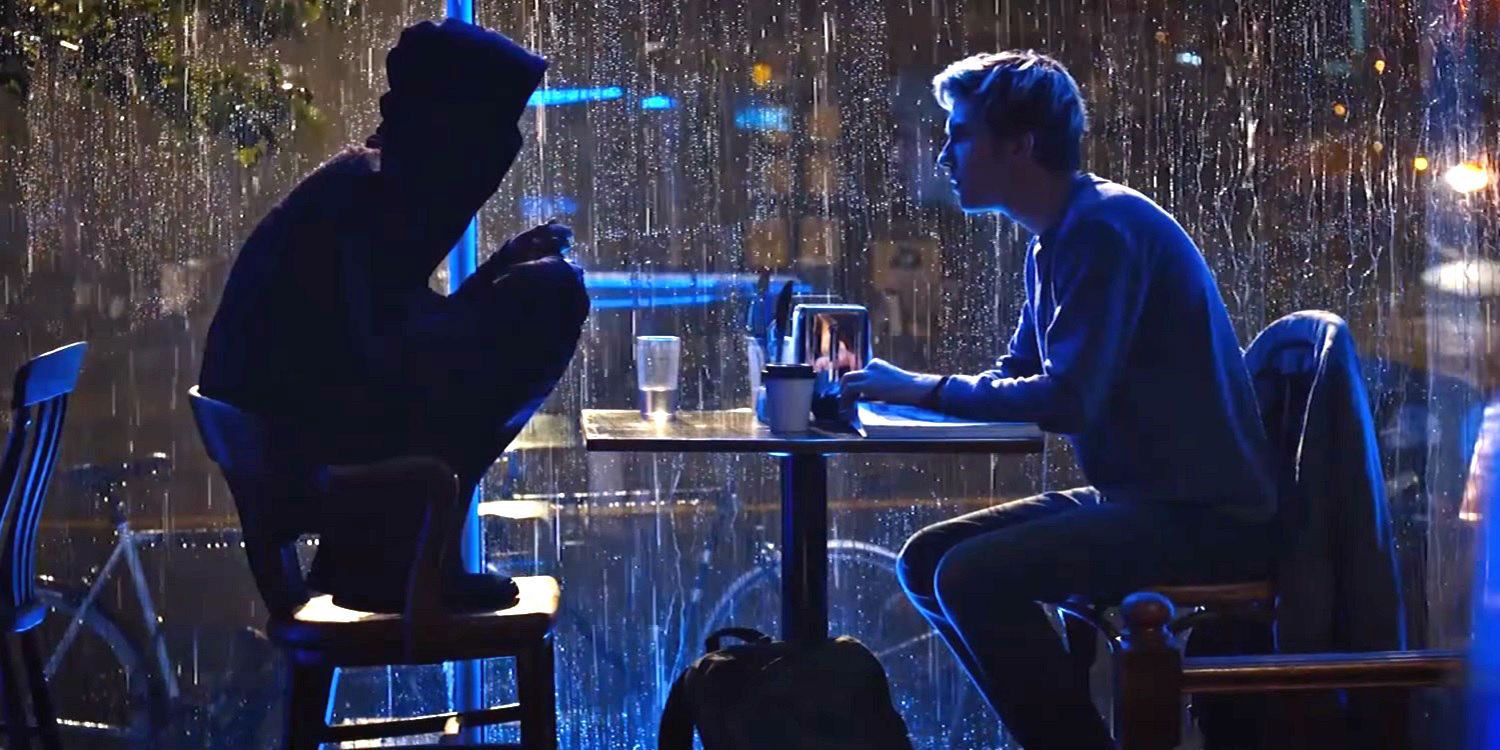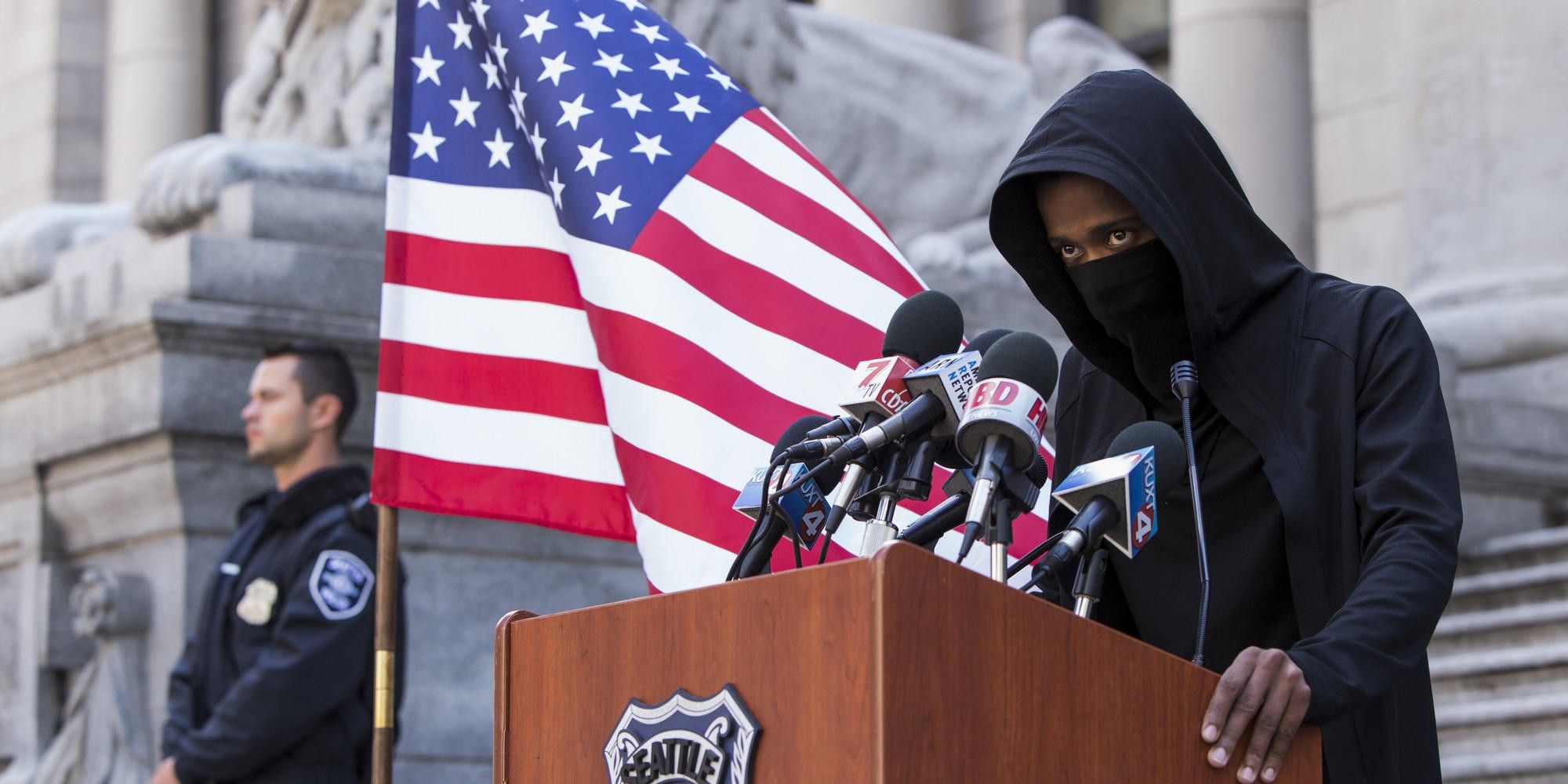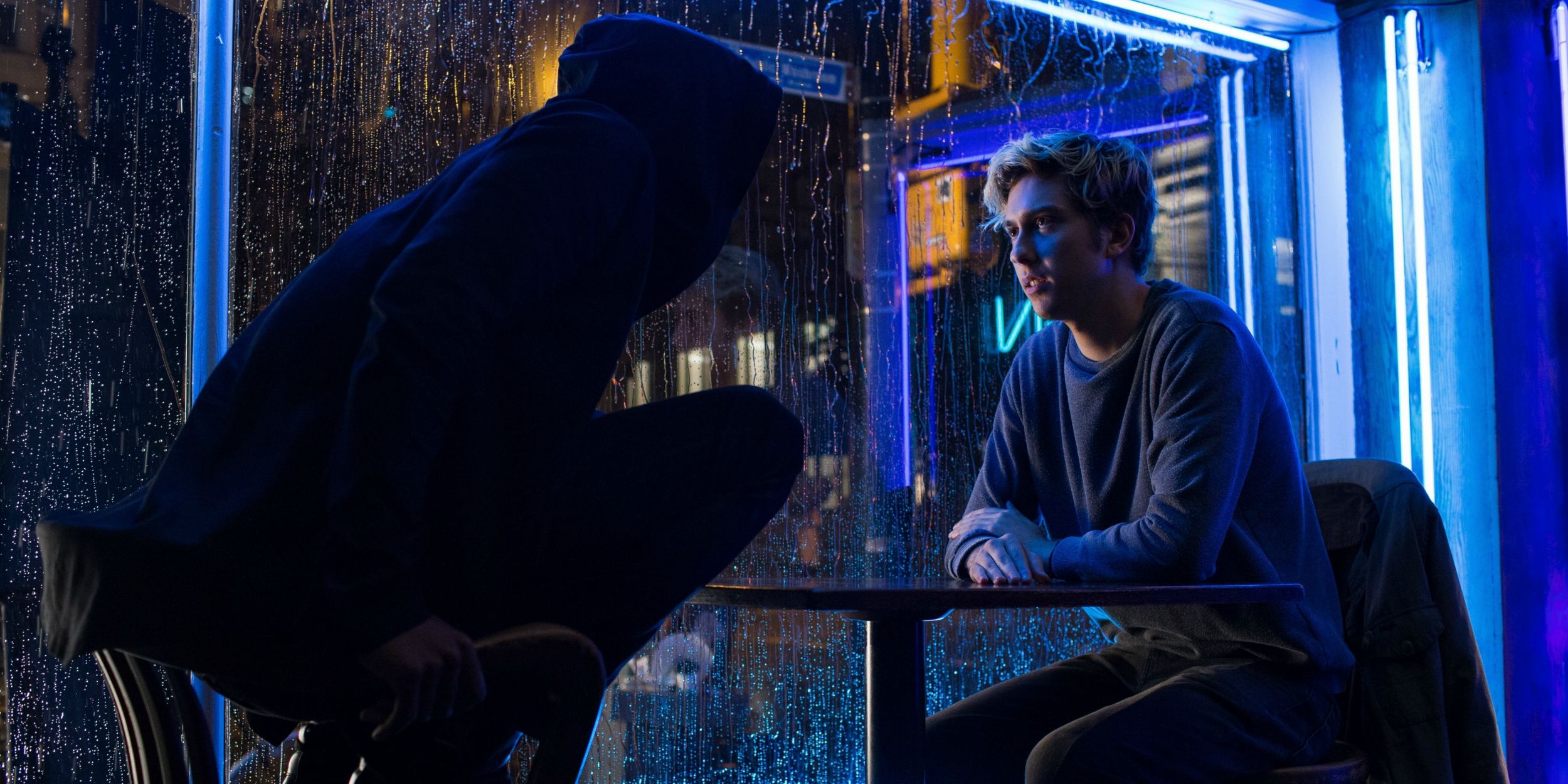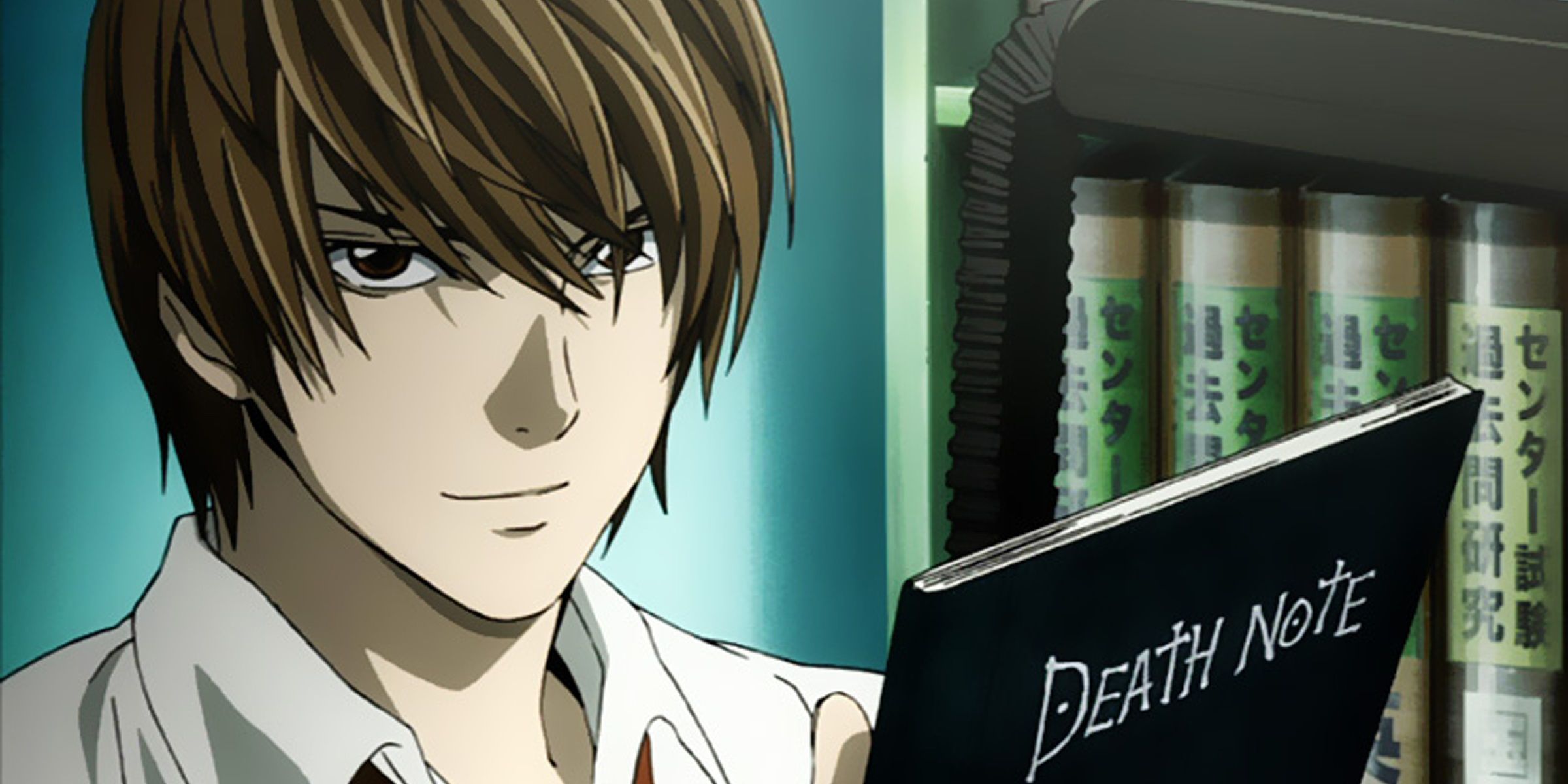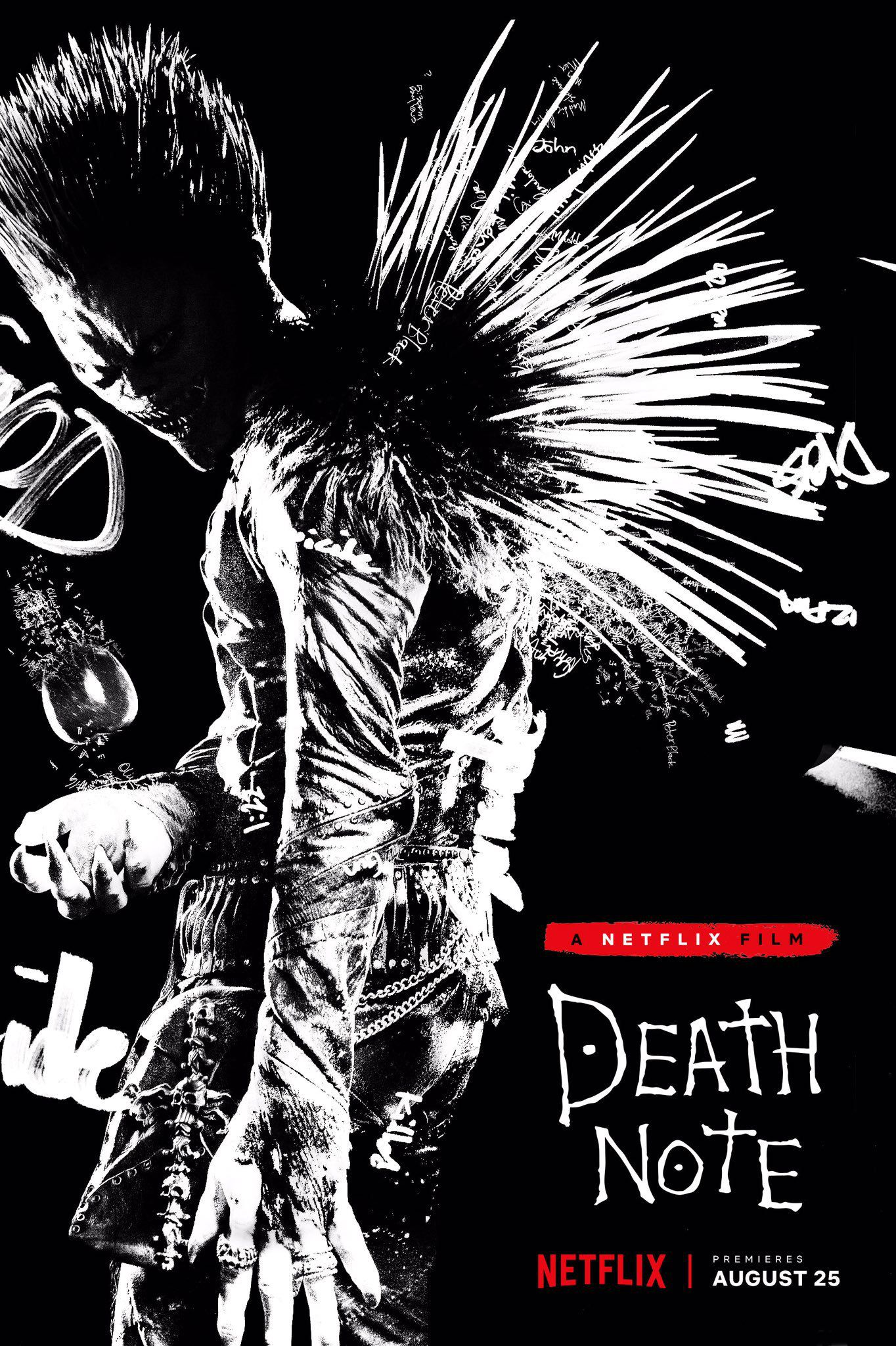The phrase "live-action movie adaptation" doesn't exactly evoke happy memories for anime and manga fans. The big screen versions of Dragon Ball and Avatar: The Last Airbender were commercial and critical failures and although the more recent Ghost In The Shell starring Scarlet Johansson certainly had merit, it was far from the smash hit many were hoping it would be.
As such, it's hardly a surprise that Netflix's adaptation of Death Note, which was directed by Adam Wingard (The Guest), is being treated with no small amount of trepidation. Based on the beloved manga by Tsugumi Ohba and Takeshi Obata and the subsequent anime series, Death Note is a dark, horror-tinged tale of genius teenager Light Yagami who finds a notebook that will kill anyone whose name is written inside. As Light begins to get drunk on his newfound power, the combined forces of the police and an oddball maverick detective strive to take him down before the situation worsens.
Although the series has already seen live-action versions in its native Japan, Netflix are releasing the first Western attempt to take on the story of Death Note and recently premiered the first trailer online. Plenty of people have responded positively to the footage but there has also been a sizeable backlash, predominantly from fans of the original anime and manga. A recent parody video showed a selection of characters from the anime series reacting to the trailer in shock and disgust and predictably, a Downfall Hitler spoof video has also hit the web. But what exactly has got Death Note fans so concerned, and do they have a point?
East to West
Of course, it would be remiss to ignore the accusations of whitewashing currently being leveled at the Netflix version of Death Note, which has altered the setting from Japan to the U.S.A., with the cast largely comprising of North American actors as a result. Similar criticisms plagued the release of Ghost in the Shell and arguably contributed to its struggles at the box office, but while Johansson's casting could be defended due the fact her character is an android, Light and the bulk of Death Note's cast are definitively Japanese, with the narrative explicitly set in the Kanto region of the country. Whether this is appropriate in 2017 or not is a long debate that won't be settled here, but it should be noted that actor Edward Zo claims he was told not to audition for the role of Light purely because of his Asian heritage.
But there are other reasons why changing the setting of Death Note from East to West is a poor move, and they have nothing to do with race and everything to do with narrative and effective storytelling. Many fans of the original anime and manga series would argue that the Japanese location is integral to the Death Note story. Just as the setting of Neo-Tokyo is vital to Akira or how New York is essential to Spider-Man, Death Note is firmly rooted in Japanese culture. For instance, the concept of Shinigami (or Death Gods) is something that directly derives from Japanese religion and mythology and serves as inspiration for the character of Ryuk. The trailer suggests that Willem Dafoe's Ryuk is an authentic version of the character but with other Asian influences removed, the presence of a Death God may make somewhat less sense in a Western setting.
The relationship between Light and his father presents similar problems. This father and son dynamic is key in Death Note and plays into many aspects of Japanese family culture such as sense of duty and respect for elders. The values don't quite resonate in the same way for a Western audience and this may have huge ramifications for Light's character arc.
Misa Amane, meanwhile, is a Japanese Pop Idol in the original story - a very different type of celebrity than the likes of Taylor Swift and Katy Perry. Her fans' level of devotion and her celebrity status become very important to Light and are instrumental in his transformation into Kira. The Netflix version has changed this character from a well-known singer to one of Light's classmates, fundamentally altering the story in a way that wouldn't have been necessary had the movie been set in Japan.
In fairness, all of these issues are simple enough to overcome. Ryuk certainly wouldn't be the first creature from Japanese mythology to make it onto Western screens, and while Light's relationship with his father certainly won't be the same within an American setting, the relationship is easy enough to adapt for a different audience. However, the question remains: why bother making such changes in the first place? If the phrase "if it ain't broke, don't fix it" holds any merit at all, Death Note's story was very much not broken. Modern audiences are intelligent enough to enjoy movies set outside their native country and if keeping Death Note in Japan would've resulted in a stronger narrative, why change it?
Next Page: [valnet-url-page page=2 paginated=0 text='Light%20and%20L']
Light and L
The other significant issue bugging Death Note fans about the Netflix adaptation is the personalities of both Light and L, the story's two central characters, as neither seems remotely faithful to their original incarnations. While it's important to remember that this is only based on trailer footage, and such clips can often over-simplify characters in their short run-time, it does appear as if Light has been molded into a more traditional, action-ready protagonist. If this does end up being the case, a large part of Death Note's soul would've been removed, as Light's status as an evil antihero is arguably one of the reasons for the franchise's popularity in the first place.
Similarly, the character of L is well-loved by fans for being an eccentric and sometimes emotionless oddball who only lives to test his intellect via the solving of crime and eat some cakes. There is even less footage of L in the trailer and so, once again, the full movie could give a far more accurate representation of him but first impressions seem to indicate the he too has been cast more as a traditional do-gooder, with the endearing goofiness (other than sitting with his feet up) toned down somewhat.
This transformation from the dark and intellectual approach of the anime and manga to Netflix's conventional and action-orientated tone runs throughout the trailer and is another reason for the backlash. Where the original Death Note is perhaps best described as a supernatural detective thriller, the Netflix version appears far more straight-forward with plenty of action set-pieces for the sake of spectacle.
At the end of the tunnel...
Certainly then, Netflix has taken more than a few liberties with the source material. But many of those who enjoyed the trailer are arguing that the live-action Death Note didn't necessarily need to be a completely authentic adaptation in order to be an entertaining film. And perhaps they have a point. Watching the trailer as a Death Note fan, it's easy to find flaws and anyone expecting the same kind of tone and narrative as the anime or manga will almost certainly be disappointed.
But the trailer arguably fares far better when watched as a clip in its own right, with any preconceptions of what Death Note "should" be put to one side. The story, while undoubtedly Westernized, still looks different compared to the usual teen-fronted horror fare and had the movie not been based on a much-loved and well-established franchise, it would have surely attracted a far more positive response.
Understandably though, the default fan setting for live action anime adaptations is "approach with extreme caution" and it appears as if Death Note will be no exception. As an authentic interpretation of its source material, the Netflix version of Death Note has perhaps already failed. But being a bad Death Note movie doesn't necessarily mean Death Note will be a bad movie.

